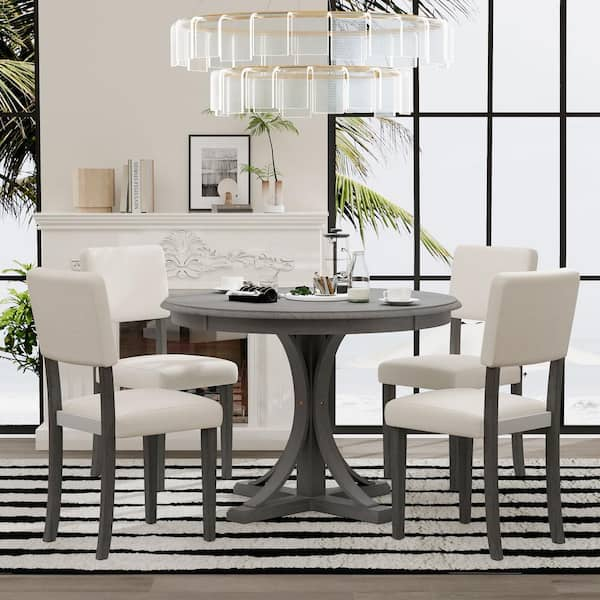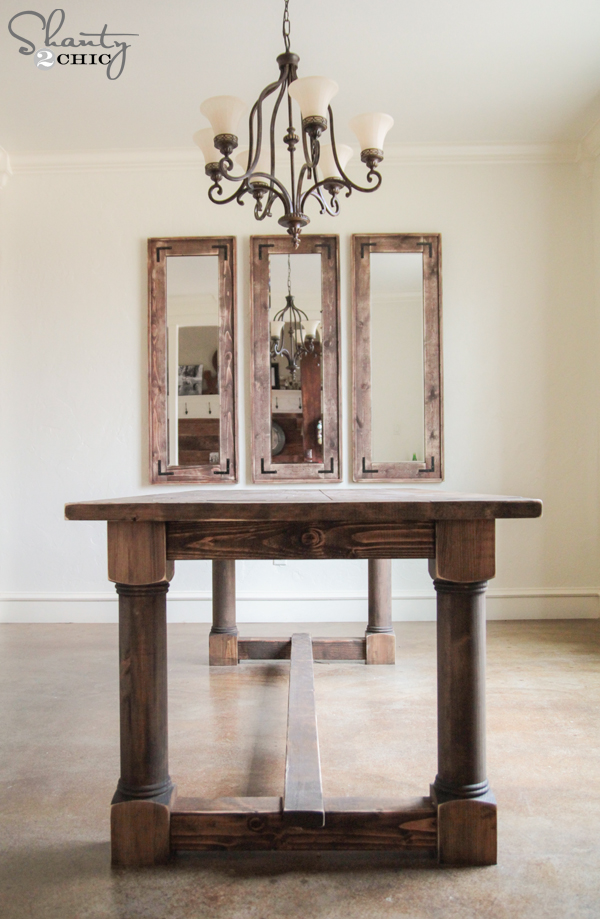Find the Ideal Dining Room Table Legs for Any Interior Design Style
Find the Ideal Dining Room Table Legs for Any Interior Design Style
Blog Article
From Conventional to Modern: Locate the Perfect Dining-room Table Legs for Your Design
The option of dining space table legs plays a critical duty in defining the overall personality of your room, connecting the void between standard workmanship and contemporary appearances. While traditional designs such as cabriole and transformed legs stimulate a feeling of ageless sophistication, modern styles like hairpin and geometric choices provide an opportunity for striking aesthetic interest. Assessing the ideal balance between these designs requires a nuanced understanding of your existing décor and individual taste. As you take into consideration these elements, the concern continues to be: exactly how can you flawlessly integrate these diverse leg designs to create a harmonious eating experience?
Recognizing Table Leg Styles
The variety of dining room table leg styles can considerably influence both the appearances and capability of the room. Each leg design adds special functional attributes and aesthetic aspects, dealing with diverse style preferences and use needs. Understanding these designs is crucial for picking the right eating table that lines up with your general interior decoration vision.
For circumstances, conical legs offer a tidy, timeless appearance that can improve a space's style, while stand bases give security and maximize legroom, making them perfect for smaller sized rooms. Hairpin legs, a hallmark of mid-century modern-day style, introduce a commercial style, permitting a ventilated, open feeling. Similarly, trestle legs stimulate rustic appeal, providing durable support and a feeling of timelessness.
Wooden legs can bring warmth and texture, whereas metal alternatives typically share a sleek, contemporary ambiance. Inevitably, understanding table leg designs is crucial for creating a cohesive eating location that mirrors personal style while making sure usefulness and comfort.
Conventional Table Leg Options
When choosing eating area table legs, traditional choices commonly personify timeless style and workmanship. These designs reflect a rich heritage and a commitment to high quality, making them suitable for those that value timeless looks.
Among the most famous typical leg designs is the cabriole leg, identified by its elegant bent form. This layout often features decorative carvings and is most commonly found in Queen Anne and Chippendale furnishings. An additional preferred alternative is the transformed leg, which flaunts a collection of smooth, rounded shapes that supply a traditional look while preserving stability.
Furthermore, the straight leg, while simple, offers a basic and tough framework that can mix flawlessly with a range of tabletop styles. For those drawn to ornate detailing, claw-and-ball feet legs stimulate a sense of majesty and can function as a stunning prime focus in any kind of eating space.
Finally, pedestal bases, although not purely legs, supply an alternate standard choice that allows for enough legroom and can be perfectly sculpted. Each of these typical leg styles adds to the total atmosphere of a dining space, marrying feature with aesthetic allure.

Modern Table Leg Designs
Modern table leg layouts use a diverse series of styles that highlight clean lines and ingenious materials. These layouts typically prioritize capability while working as striking focal factors within a dining room. Minimalist appearances are common, with legs crafted from products such as metal, glass, and engineered timber, which sites contribute to a contemporary and ventilated feeling.
One prominent layout is the barrette leg, defined by its slim, conical structure that supplies security without overwhelming the tabletop (dining room table legs). This design is often discovered in mid-century modern-day furniture and can effortlessly match numerous table shapes. One more fad is the use of geometric forms, where legs may handle angular or unbalanced kinds, including aesthetic interest and a touch of creativity

Mixing Styles for Special Spaces
Frequently, house owners look for to produce unique dining rooms that mirror their individual style by blending various layout elements. This approach enables the unification of diverse looks, resulting in an unified yet distinctive setting. For example, pairing a rustic wooden table with streamlined, modern-day steel legs check my site can develop an attractive contrast that elevates the space's total allure.
In addition, incorporating vintage table legs with modern table tops can evoke a sense of background while preserving a modern-day sensibility. Such combinations not only showcase individual taste yet likewise motivate creativity, allowing home owners to curate an area that really feels both individual and inviting.
Color plays a crucial function in this mixing procedure; picking table legs that match or contrast with the existing color pattern can improve aesthetic rate of interest. As an example, whitewashed legs can soften the boldness of a dark table surface, creating a balanced visual.
Tips for Picking the Right Legs
Picking the right table legs is necessary for attaining both performance and visual charm in your eating area. Begin by considering the general design find more of your room. Traditional settings gain from legs that feature complex makings or transformed styles, while modern rooms might ask for streamlined, minimal styles.
Following, analyze the elevation and security of the legs. dining room table legs. Basic table vary in between 28 to 30 inches in elevation, so ensure the legs complement this measurement for comfort. Furthermore, robust materials, such as hardwood or metal, can improve security and durability
Review the leg form too-- alternatives consist of right, tapered, or stand layouts. Straight legs supply a timeless appearance, while conical legs can add a touch of style. Pedestal bases provide ample legroom and are optimal for smaller areas.
Final Thought
In summary, choosing the optimal dining room table legs requires careful consideration of both modern-day and typical designs. Standard choices such as cabriole and turned legs provide timeless elegance, while modern-day styles like hairpin and geometric shapes give a modern touch. By balancing leg style, height, and product with the general design, a cohesive and welcoming ambience can be accomplished. Ultimately, the picked table legs must show the desired visual, improving the eating experience within the room.
The selection of dining area table leg styles can dramatically influence both the aesthetic appeals and functionality of the area. Ultimately, recognizing table leg styles is crucial for creating a natural dining area that mirrors personal style while making sure practicality and comfort.One of the most legendary conventional leg designs is the cabriole leg, characterized by its stylish bent shape. Straight legs offer a traditional appearance, while tapered legs can include a touch of style.In summary, choosing the ideal dining space table legs calls for careful consideration of both contemporary and standard designs.
Report this page